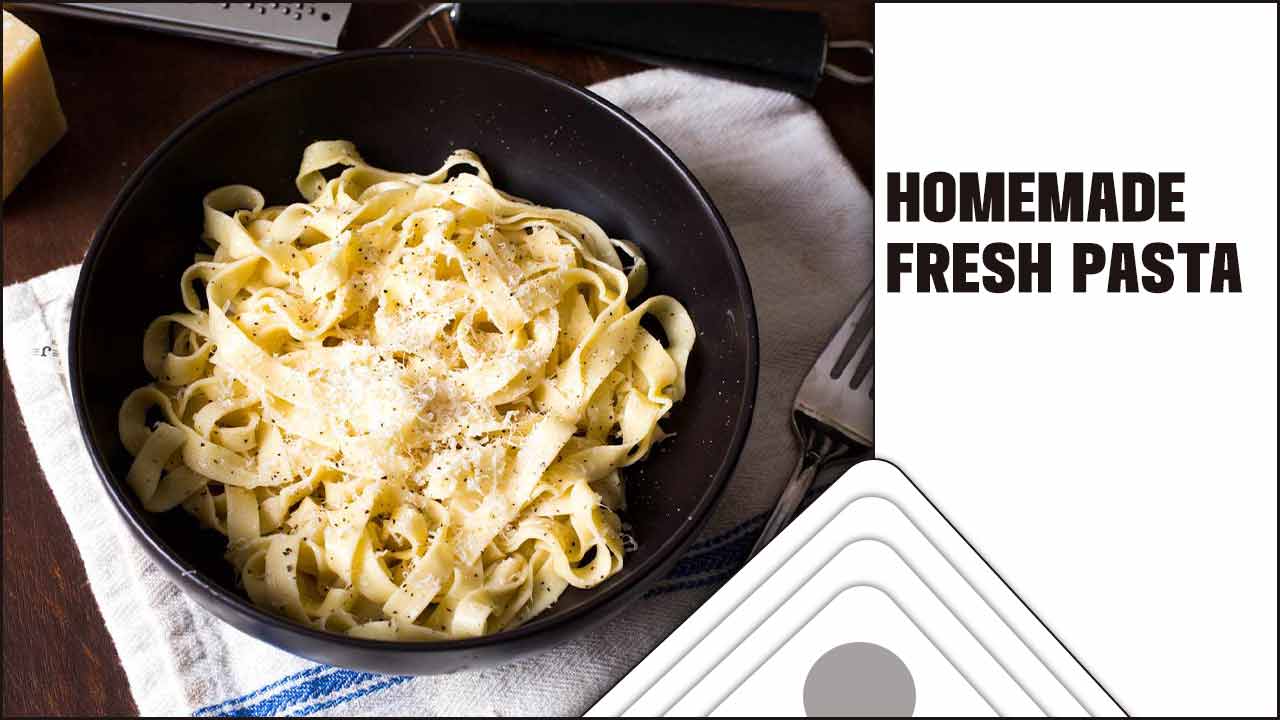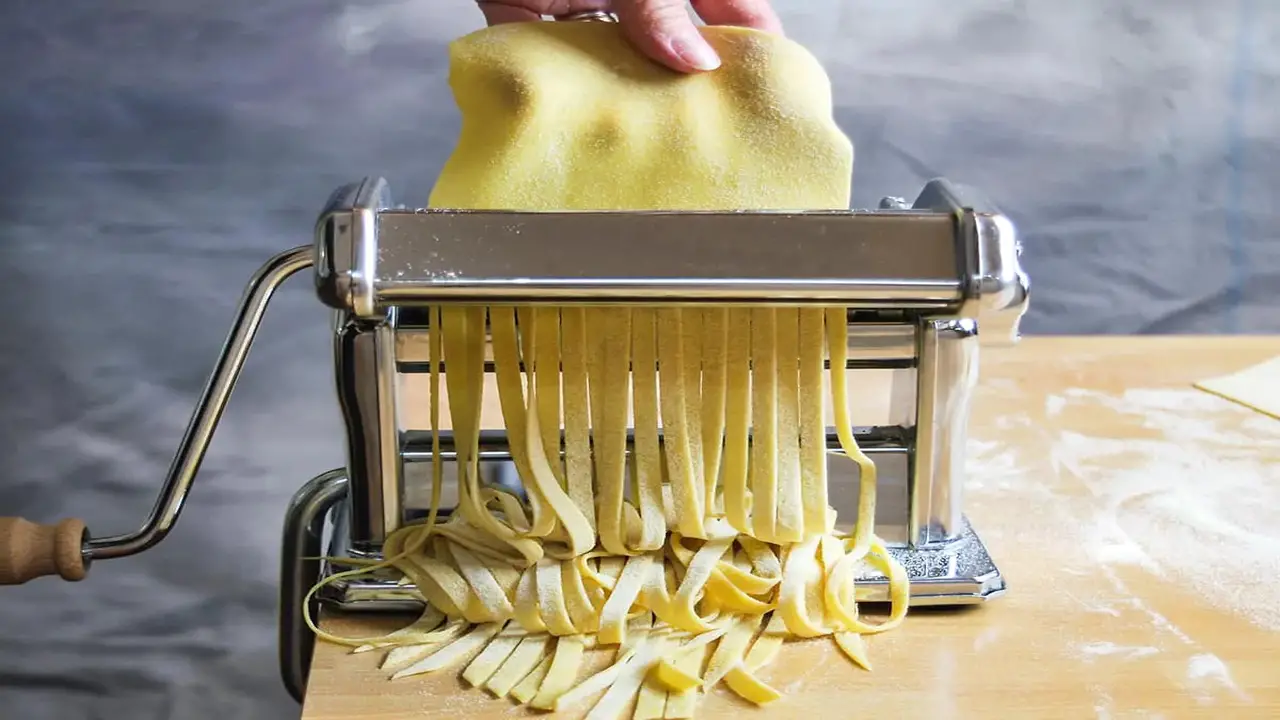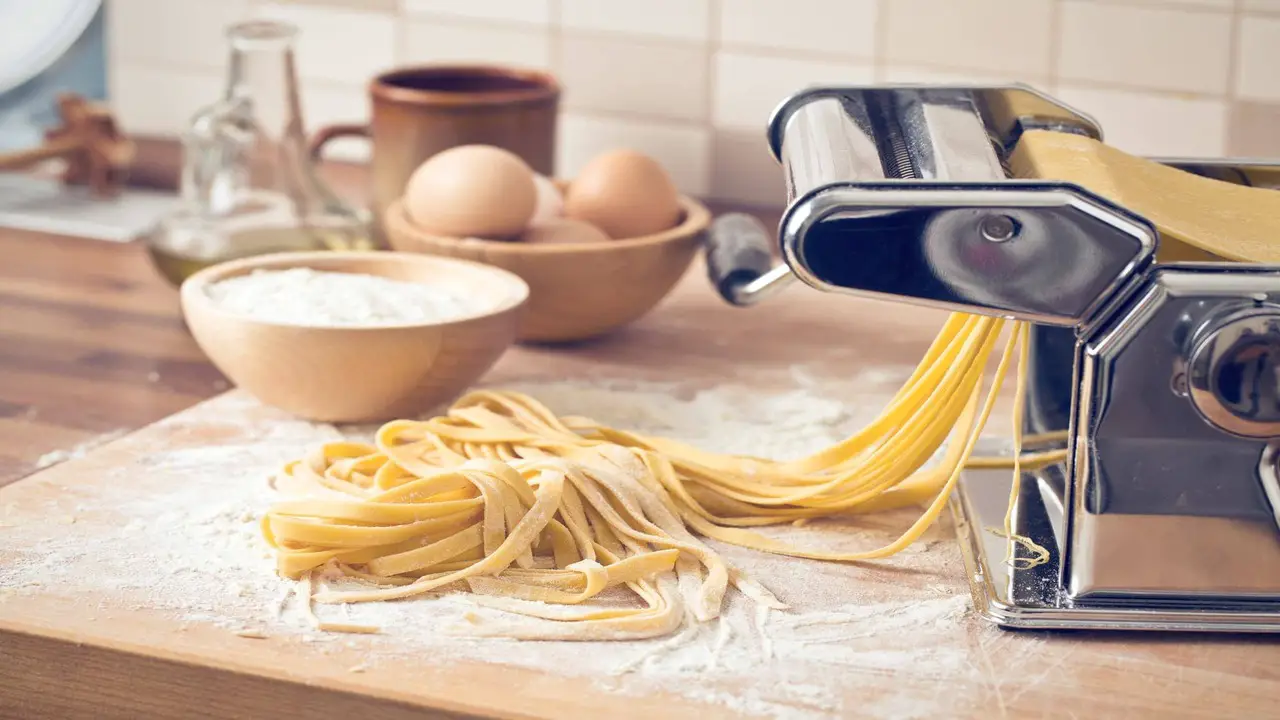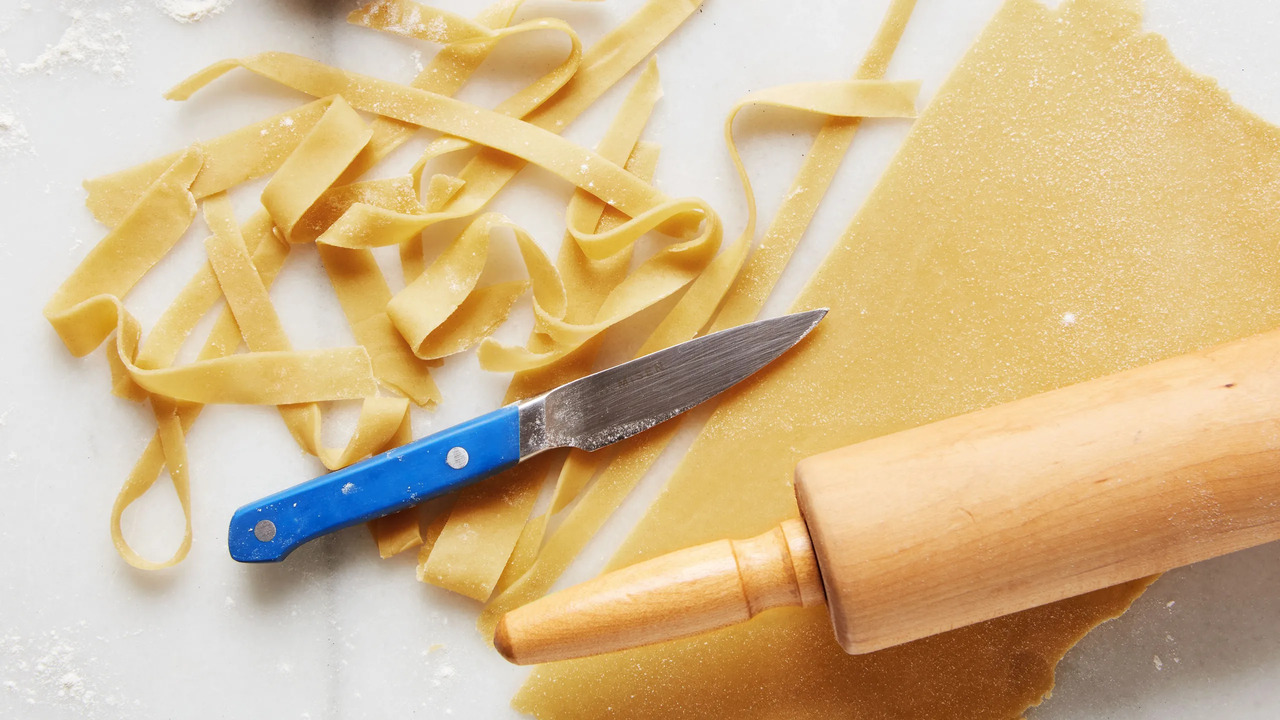Fresh, homemade pasta is a delight to the senses. It’s tender, flavorful, and oh-so-satisfying. But for those who have never attempted it before, making pasta from scratch can seem daunting.
Fear not, however, for with the right tips and tricks, anyone can create delicious homemade pasta that will impress even the most discerning palate. We’ll explore the world of fresh pasta, covering everything from the best ingredients to techniques for kneading and shaping the dough.
We’ll also discuss the importance of equipment and how to store your finished product properly. Whether you’re a seasoned pasta maker or a beginner, these tips and tricks will take your Homemade Fresh pasta to the next level.
So roll up your sleeves, dust off your rolling pin, and create the perfect batch of fresh pasta. With a little practice and the right guidance, you can soon whip up this Italian classic easily and confidently.

How To Make Homemade Fresh Pasta Recipe

Making homemade fresh pasta is a rewarding and delicious culinary endeavor. While it may seem daunting at first, with the right tools and techniques, anyone can create their own pasta from scratch. The key to making perfect fresh pasta lies in the quality of the ingredients and the kneading process.
Ingredients:
- – 2 cups all-purpose flour
- – 2 large eggs
- – 1/2 teaspoon salt
- – 1-2 tablespoons water (if needed)
Instructions:
Making homemade fresh pasta is a fun and delicious project. Homemade fresh pasta is a delicious addition to any meal and can be customized with various flavors and fillings. So roll up your sleeves, get creative, and enjoy the satisfaction of making your own pasta from scratch. Making homemade fresh pasta is a fun and rewarding culinary project. Here are some step-by-step instructions to help you get started:
- Gather your ingredients: You will need all-purpose flour, eggs, and salt.
- Create a well: Pour the flour onto a clean work surface and use your hands to create a well in the center.
- Crack the eggs: Crack the eggs into the well, making sure not to break the yolk.
- Mix the ingredients: Using a fork or your hands, gradually incorporate the flour into the eggs until a dough forms.
- Knead the dough: Transfer the dough onto a lightly floured surface and knead it for about 10 minutes until it becomes smooth and elastic.
- Rest the dough: Wrap the dough in plastic wrap and let it rest at room temperature for at least 30 minutes to allow the gluten to relax.
- Roll out the dough: Divide the rested dough into smaller portions and flatten each portion with a rolling pin or pasta machine until it reaches your desired thickness.
- Cut or shape the pasta: Use a knife or pasta machine attachments to cut or shape the pasta into your preferred style, such as spaghetti, fettuccine, or lasagna sheets.
- Cook and enjoy: Bring a large pot of salted water to a boil and cook the fresh pasta for a few minutes until al dente. Drain and toss with your favorite sauce or toppings before serving.
How To Cook Homemade Fresh Pasta

Pasta is a staple in many cuisines around the world. It is a versatile food that can be enjoyed in a variety of ways, from classic spaghetti and meatballs to creamy fettuccine alfredo. Made from durum wheat flour and water, pasta is typically boiled until it reaches a soft yet firm texture.
Cooking homemade fresh pasta is a rewarding and delicious experience. Here are some steps to help you cook your homemade fresh pasta to perfection:
- Bring a large pot of salted water to a rolling boil.
2. Carefully add your fresh pasta to the boiling water and gently stir to prevent sticking.
3. Cook the pasta for about 2-3 minutes or until it floats to the top of the water.
4. Use a slotted spoon or pasta fork to remove the cooked pasta from the water and transfer it to a colander or strainer.
5. Rinse the pasta under cold running water to stop the cooking process and remove any excess starch.
6. Drain well and toss with your favorite sauce or toppings.
7. Serve immediately and enjoy your homemade fresh pasta.
Tips And Tricks For Making Perfect Fresh Pasta

Making fresh pasta is a skill that can take some practice. But with some tips and tricks, you can create perfect homemade pasta every time. Firstly, make sure to use the right flour for your pasta. Semolina flour is ideal for making pasta as it has a high gluten content which helps the pasta hold its shape and texture.
Also, ensure that you measure your ingredients accurately for the right pasta consistency. Another important tip is to knead the pasta dough well, which helps to activate the gluten in the flour. Letting the dough rest for at least 30 minutes before rolling it out is also recommended.
Start with the thickest setting on your pasta roller when rolling out the pasta dough, and gradually work your way to the thinnest setting. This helps to create a uniform thickness and prevents the pasta from tearing. Additionally, ensure that you use enough flour to dust. The dough and your work surface to prevent the pasta from sticking.
Conclusion
Making fresh pasta at home is a rewarding and enjoyable experience that can elevate your cooking skills and impress your guests. With the right ingredients, tools, and techniques, anyone can master the art of pasta making and create delicious dishes that rival those of top Italian restaurants.
Whether you prefer classic shapes like spaghetti and fettuccine or more creative ones like ravioli and tortellini, homemade fresh pasta offers endless possibilities for experimentation and customization. Whether you prefer homemade penne, linguine, or rigatoni, there is a pasta shape and dish for everyone to enjoy. So grab your fork and dig into a comforting bowl of pasta today.
FAQ
1.What Are The Essential Ingredients Needed To Make Homemade Fresh Pasta?
Ans: The essential ingredients needed to make homemade fresh pasta are all-purpose flour, eggs, and salt.
2.How Long Does It Take To Make Fresh Pasta From Scratch?
Ans: It typically takes around 30 minutes to make fresh pasta from scratch, not including any resting or drying time. However, this can vary based on the type of pasta being made and the individual’s level of experience.
3.Can You Make Fresh Pasta Without A Pasta Maker Or Rolling Pin?
Ans: Yes, it is possible to make fresh pasta without a pasta maker or rolling pin. One method is to use a knife to cut the dough into thin strips or shapes.
4.How Do You Store Fresh Pasta After It’s Made?
Ans: Fresh pasta can be stored for a short period of time in the refrigerator or for a longer period of time in the freezer. To store fresh pasta in the refrigerator, wrap it tightly in plastic wrap and place it in an airtight container.
5.What Are Some Creative Ways To Use Fresh Pasta Besides Traditional Italian Dishes?
Ans: Use fresh pasta in place of rice noodles in a stir-fry or noodle bowl with Asian-inspired flavors.

I’m a writer and blogger who loves to talk about entertainment, culture, and relationships. I love to share my thoughts and insights on these topics, and I’m always looking for new ways to engage with my readers. I’m also a big fan of learning new things, so I’m always exploring new areas of interest.
